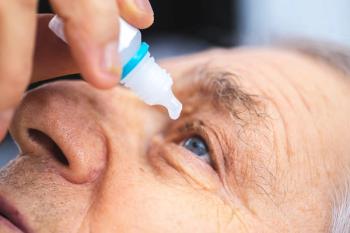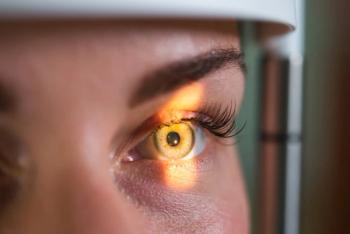Cataract and refractive surgeries are life-changing for many patients, offering improved visual acuity and freedom from glasses or contact lenses. But, as the saying goes, “The surgery isn’t over until the healing is done.” Proper postoperative care is crucial to achieving the best outcomes and ensuring happy patients. There are many concerns during this time. The following pearls will help you navigate the ups and downs of postoperative management, minimize complications, and handle those tough conversations when outcomes do not meet expectations.
Immediate postoperative care (first 24 to 48 hours)
Patient education is key before and after cataract and refractive surgery. The foundation of successful postoperative care often begins with the surgeons and their staff before the patient leaves the surgical suite. The patient and their chaperone are usually given detailed postoperative instructions before discharge. Clear, written instructions are a must. Patients should know what to expect if concerns arise and how to reach the managing doctors. These instructions should be re-emphasized at the day 1 postoperative visit or telehealth call. Do not forget to review the medication schedule; this is often the most confusing thing for the patients.
- Protective measures: Avoid eye rubbing, hot tubs, and saunas; showering is OK, but keep the water out of the eye. Refrain from activities that increase intraocular pressure (IOP), such as heavy lifting or sudden bending over. If the surgeon utilizes shields, wear them at night.
- Medications: Stress the importance of adhering to the prescribed antibiotic, steroid, and nonsteroidal anti-inflammatory drug (NSAID) regimen.
- Symptoms to expect: Mild discomfort, blurred vision, photophobia, and tearing are normal.
- Red flags: Sudden vision loss or severe pain warrants immediate attention, especially after the 24-hour mark.
Managing expectations: We know that setting expectations before surgery is a must; an ounce of prevention is worth a pound of cure. But remember that this ideation should continue throughout the process. Set the stage early by letting patients know that recovery is a process. Most cataract patients will experience significant improvement within days, but some may need weeks to reach optimal clarity. Refractive surgery patients, especially those undergoing photorefractive keratectomy (PRK), should be prepared for a longer healing timeline.
Follow-up visit concerns following cataract and refractive lens exchange
One-day postoperative visit
- Corneal clarity and wound integrity: Look for signs of corneal edema and check for proper wound closure.
- IOP: Look for elevated IOP from retained viscoelastic, low pressure, or shallow anterior chamber, which may indicate possible wound dehiscence.
- Toxic anterior segment syndrome: Although rare, this reaction is time-critical and will typically present as early as day 1, so any signs of an abnormal level of inflammation and cells/flare in the anterior chamber must be addressed immediately.
One-week visit
- Signs of endophthalmitis: This severe infection most commonly presents around days 3 to 5 postoperatively. Patients can experience decreased vision and pain within hours of onset, and treatment (most often by a retina specialist) should be immediate.
- Residual inflammation: Ensure inflammation is tapering and check for IOP spikes.
- Refractive status: Patients may start noticing vision changes, but remember that things may shift. Check vision at all distances appropriate for the lens implanted or surgical goal. Refracting and dilating those with toric intraocular lenses (IOLs) to ensure no rotation is a good idea.
One-month visit
- Steroid response: A steroid response usually takes 4 to 6 weeks so that a high IOP may present at this appointment. A small subset of people are “super-responders” and may have a response as early as week 1.
- Cystoid macular edema (Irvine-Gass syndrome): If vision has decreased since previous appointments or the patient’s best corrected visual acuity isn’t 20/20 with no other causes, remember to check the patient’s macula.
- Posterior capsule opacification: Check for early signs of opacification and educate patients about the potential need for YAG laser capsulotomy.
- Refractive stability: Refine the final refractive plan. Ensure there has been no IOL rotation in those who have toric IOLs.
Follow-up visit concerns following corneal refractive surgery
One-day postoperative visit
- Corneal clarity and wound integrity: Assess the corneal surface for epithelial defects, flap integrity (laser in situ keratomileusis [LASIK]), or lenticule removal site healing (small incision lenticule extraction [SMILE]). In PRK patients, ensure that the bandage contact lens is in place.
One-week postoperative visit
- Infection risk assessment: Monitor for signs of microbial keratitis, which typically presents between days 3 and 5 postoperatively.
- Residual inflammation check: Evaluate anterior chamber reaction and taper steroids appropriately.
- Refractive stability evaluation: Educate patients on expected fluctuations, especially in PRK and SMILE cases. PRK cases will still have significant visual blur and fluctuation.
- Ocular surface health: Assess dry eye symptoms, which may peak at this stage, particularly in LASIK patients. In PRK patients, the epithelial tissue should be 100% regrown with no persistent defect. Haze is likely present, and a bandaged contact lens is usually removed at this time.
One-month postoperative visit
- Refractive stability assessment: Confirm stabilization and address residual refractive error if needed.
- Epithelial ingrowth monitoring: Especially in LASIK patients, check for ingrowth at the flap edge.
- Corneal haze evaluation: PRK patients may show signs of haze, requiring further steroid tapering or treatment.
- Patient satisfaction review: Address concerns regarding visual quality, night glare, or dysphotopsias.
Managing dry eye and ocular surface disease
Pearls for success
- Develop a consistent approach for each postoperative visit by talking with your surgeons to be on the same page.
- Personalize care based on patient needs.
- Leverage optical coherence tomography, topography, and intraocular lens calculations for enhanced monitoring and more precise interventions.
- Stay flexible. The most successful clinicians adapt their strategies as new technologies and protocols emerge.
Ocular surface optimization is essential for all surgical patients, and any disease or disruption should be treated aggressively before surgery. If not, this will affect measurements and calculations, ultimately leading to poor outcomes for these patients. Most of our patients who have cataract surgery have some level of ocular surface disease, whether it is meibomian gland dysfunction or dry eye disease.1 These have been shown in studies to be exacerbated by both corneal refractive and cataract surgery.2-5 It is important to address underlying dry eye and ocular surface disease preoperatively and continue monitoring postoperatively. Encourage good lid hygiene, warm compresses, nutraceuticals, and preservative-free artificial tears, at the very least. Do not hesitate to prescribe immunomodulators to address chronic inflammation, such as cyclosporine or lifitegrast. This is a nonexhaustive list. Because preservatives in topical ophthalmic drops can wreak havoc on the ocular surface, consider switching to preservative-free postoperative medications and lubricants for patients prone to dry eye.
Elevated IOP
Steroid response is unpredictable, necessitating close monitoring, especially in patients with glaucoma. If the IOP is elevated at day 1, it is most commonly caused by retained viscoelastic, not steroid response. IOP elevations related to this typically peak 3 to 7 hours after surgery, persist for about 24 hours, and can be quite painful; they may also cause corneal edema when high enough.6 If the elevation is mild, depending on the health of the patient’s nerve tissue, adding an ocular hypotensive to lower the pressure can help. With severe elevation, burping the wound is an option; however, studies have shown that the IOP will only be controlled for approximately 1 hour before rising again, so it should be done in conjunction with an ocular hypotensive.7 Elevations of IOP related to steroid response are most typically seen around 4 to 6 weeks, at which point steroids are often being completed or tapered. Utilizing ocular hypotensives to control the pressure in these patients is an option if the steroids need to be continued due to incomplete healing.
Corneal refractive surgery-specific considerations
LASIK and PRK
Patients undergoing PRK should be counseled on epithelial healing and the potential for early haze formation and persistent blurred vision that may take 4 to 6 weeks to resolve and reach final acuity. Pain management is a key consideration, requiring the use of oral NSAIDs, sometimes opioids, and topical anesthetics to ensure comfort during the initial healing phase. LASIK patients, on the other hand, face a different set of risks, including flap-related complications. Early flap dislocations or late epithelial ingrowth must be carefully monitored and managed.
SMILE procedure
SMILE offers a distinct healing profile compared with LASIK. Although patients generally experience fewer postoperative dry eye symptoms, they may encounter slower refractive stability.8 Understanding these differences allows better patient counseling and management strategies tailored to individual surgical approaches.
Dealing with dissatisfaction
Despite best efforts, not every patient will achieve their ideal outcome. Some of the most common reasons for dissatisfaction include residual refractive error, dysphotopsias (such as glare and halos), persistent dry eye symptoms, and slow recovery of visual acuity. These issues can impact patient perception of success and must be addressed promptly and effectively.
Handling dissatisfaction requires not just clinical expertise but also strong communication skills. Listening to the patient is essential; allowing them to express concerns without interruption fosters trust. Validating their experience is also crucial. Even if the outcome is technically within the expected range, patients must feel heard and understood. It is important to avoid defensiveness, as defensive responses can damage trust. Instead, reassure the patient that their concerns are valid and that solutions exist to address them.
Develop a plan
A structured approach is essential when addressing patient dissatisfaction. A comprehensive diagnostic workup, including refraction, corneal topography, and optical coherence tomography, should be performed to rule out underlying pathology. Short-term solutions may include temporary corrective lenses, ocular surface optimization, or medication adjustments to manage symptoms. If necessary, long-term solutions such as refractive enhancement procedures or IOL exchanges can be considered once the eye has stabilized. In complex cases, referral to a corneal, retina, or refractive surgery specialist may be warranted to ensure optimal outcomes.
Remember to communicate with the patient’s surgeon so that they are aware of the situation. Collaboration with ophthalmology is vital for ensuring continuity of care. Clear communication on the patient’s status, medication changes, and follow-up plan will keep everyone on the same page and improve outcomes.
Other references
- Miller, Kevin M. et al.Cataract in the Adult Eye Preferred Practice Pattern. Ophthalmology. 129.1: 1-126.
- Holland EJ, Mannis MJ, Lee WB. Ocular Surface Disease: Cornea, Conjunctiva, and Tear Film. Elsevier; 2013.
- Lane SS, ed. Cataract Surgery: Advanced Techniques for Complex Cases. Springer; 2014.
Postoperative care is where the magic happens. You can turn a bumpy recovery into a success story by staying vigilant, communicating clearly, and proactively addressing complications. Remember, a patient who feels cared for—even when the outcome is not perfect—will trust you for years to come.
References:
Yeu E, Koetting C, Calvelli H. Prevalence of meibomian gland atrophy in patients undergoing cataract surgery. Cornea. 2023;42(11):1355-1359. doi:10.1097/ICO.0000000000003234
Trattler WB, Majmudar PA, Donnenfeld ED, McDonald MB, Stonecipher KG, Goldberg DF. The Prospective Health Assessment of Cataract Patients’ Ocular Surface (PHACO) study: the effect of dry eye. Clin Ophthalmol. 2017;11:1423-1430. doi:10.2147/OPTH.S120159
Miura M, Inomata T, Nakamura M, et al. Prevalence and characteristics of dry eye disease after cataract surgery: a systematic review and meta-analysis. Ophthalmol Ther. 2022;11(4):1309-1332. doi:10.1007/s40123-022-00513-y
Houser K, Pflugfelder SC. The surgical patient. In: Mah FS, Rhee MK. Dry Eye Disease: A Practical Guide. CRC Press; 2024:143-154.
Sambhi RS, Sambhi GDS, Mather R, Malvankar-Mehta MS. Dry eye after refractive surgery: a meta-analysis. Can J Ophthalmol. 2020;55(2):99-106. doi:10.1016/j.jcjo.2019.07.005
Grzybowski A, Kanclerz P. Early postoperative intraocular pressure elevation following cataract surgery. Curr Opin Ophthalmol. 2019;30(1):56-62. doi:10.1097/ICU.0000000000000545
Hildebrand GD, Wickremasinghe SS, Tranos PG, Harris ML, Little BC. Efficacy of anterior chamber decompression in controlling early intraocular pressure spikes after uneventful phacoemulsification. J Cataract Refract Surg. 2003;29(6):1087-1092. doi:10.1016/s0886-3350(02)01891-6
Wang B, Naidu RK, Chu R, Dai J, Qu X, Zhou H. Dry eye disease following refractive surgery: a 12-month follow-up of SMILE versus FS-LASIK in high myopia. J Ophthalmol. 2015;2015:132417. doi:10.1155/2015/132417










































